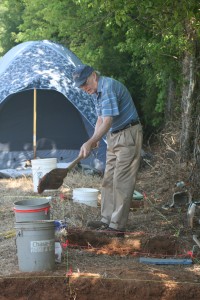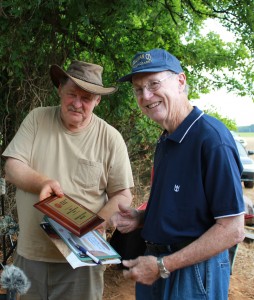After adding additional troops in Cuba, De Soto’s army had now increased to one thousand men. Sending out detachments to capture Indians, from whom he expected to learn something about the lay of the land, the expedition found the Native Americans to be especially skillful with the bow and arrow. The long bows used were so powerful that De Soto’s men could hardly cock the bows. The Indians, of course, had been practicing with bows and arrows since childhood and were amused that the soldiers couldn’t effectively use them.
In a cavalry area reconnaissance, the soldiers charged upon a small number of Indians. At that moment a voice cried out, “I am a Christian! I am a Christian! Slay me not”. A stout trooper drew back his lance, lifted the unknown man up behind him and pranced off to join his comrades.
Back in camp the rescued Christian told the long and intriguing story of his captivity. In 1528, Panfilo de Narvaez had attempted to overrun this country with a large expedition. While attempting to return to Cuba, a shipwreck occurred and Juan Ortiz survived. However, Ortiz was taken prisoner by the Indians. As a captive he was about to be burned alive, when he was fortunately saved by the beautiful daughter of Uecta, the chief. As a slave of the Indians for twelve years, Ortiz had been initially treated barbarically and compelled to guard a lonely temple in which the dead had been deposited. During the twelve years that he lived with the Indians, Ortiz learned their language and eventually became accepted by them. In the Spanish camp he was most welcomed by De Soto and became a much needed interpreter. Gratified by the appearance of Ortiz, De Soto gave him clothes and arms and placed him on a good charger. With a good interpreter the Adelantado [De Soto] was now ready to penetrate the interior.


